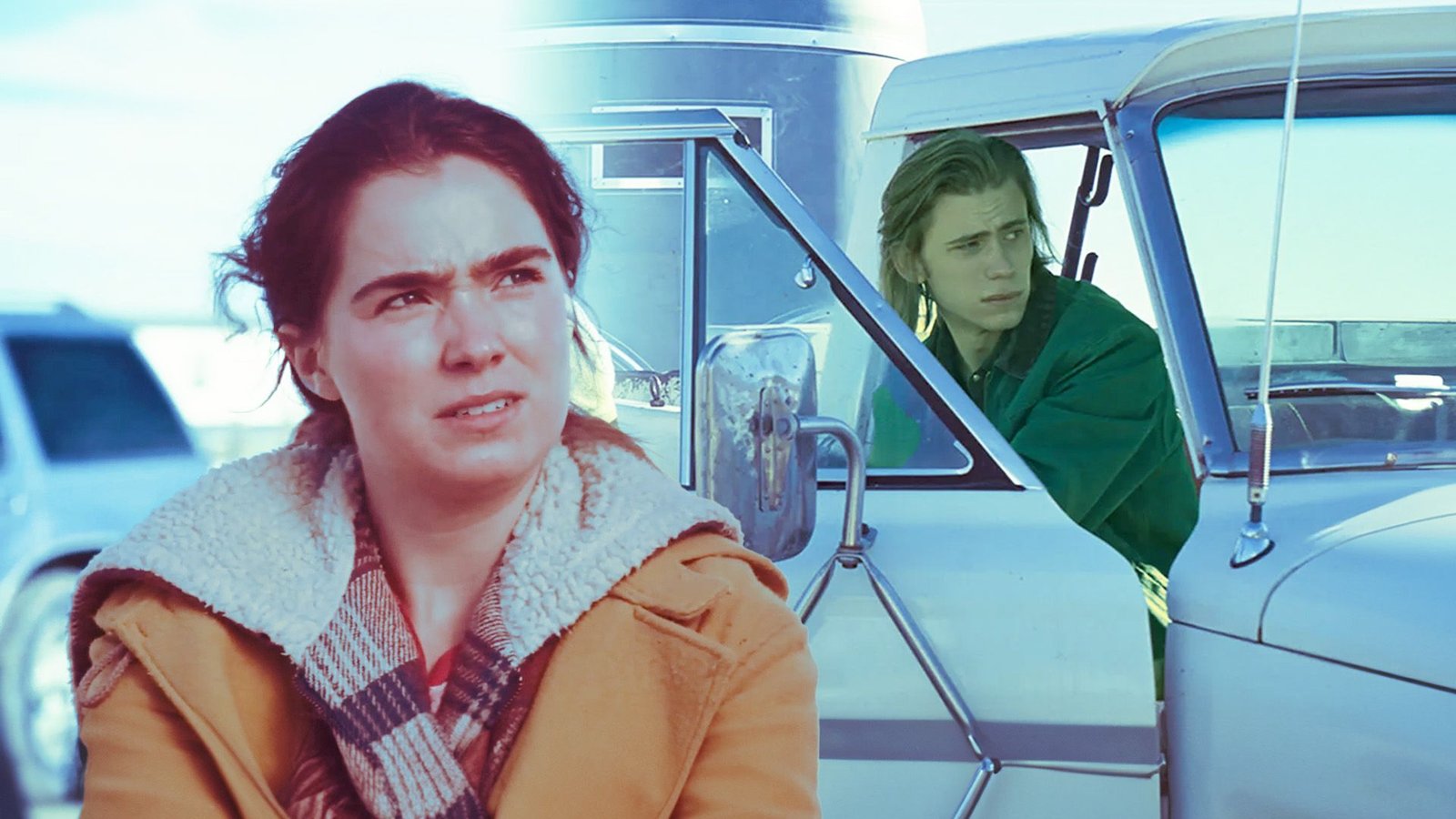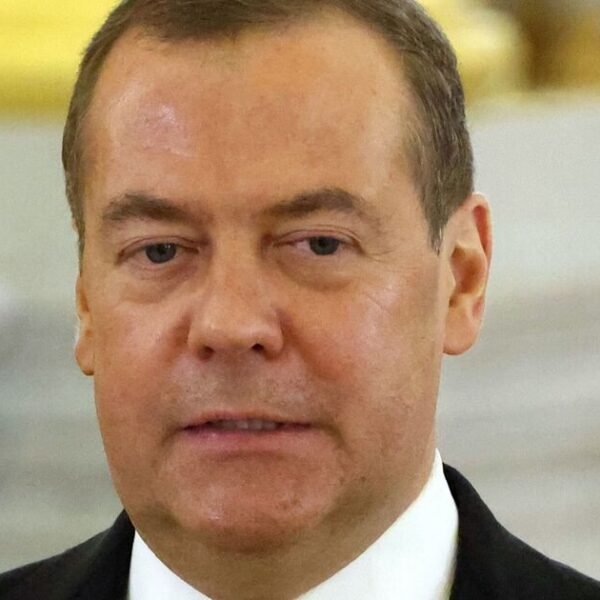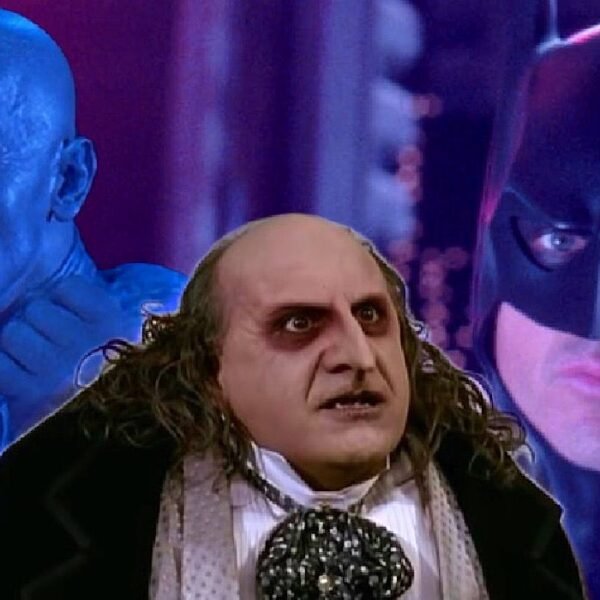Star Trek: Discovery Season 5, the final season, is currently underway. The series debuted in 2017 and was used as the launch title for the streaming service CBS All Access, now rebranded Paramount+. It was also the first Star Trek series on television in 12 years following the conclusion of Star Trek: Enterprise back in 2005. While Paramount has spent nearly a decade trying to get Star Trek 4 out of development hell, the franchise has been going strong on Paramount+ with various series on the streaming service at different times of the year. Now, there is almost always a Star Trek series on the air at any given point.
Star Trek: Discovery is a fascinating case for the franchise, as it was originally conceived as a prequel to Star Trek: The Original Series, but following the conclusion of Season 2 and starting in Season 3, the series jumped far into the future, the farthest point in the franchise history. Star Trek: Discovery now takes place in a universe built on years of stories. Here is a breakdown of the Star Trek timeline across television and film and how it all leads to Star Trek: Discovery.
Star Trek: Enterprise (2151-2155)
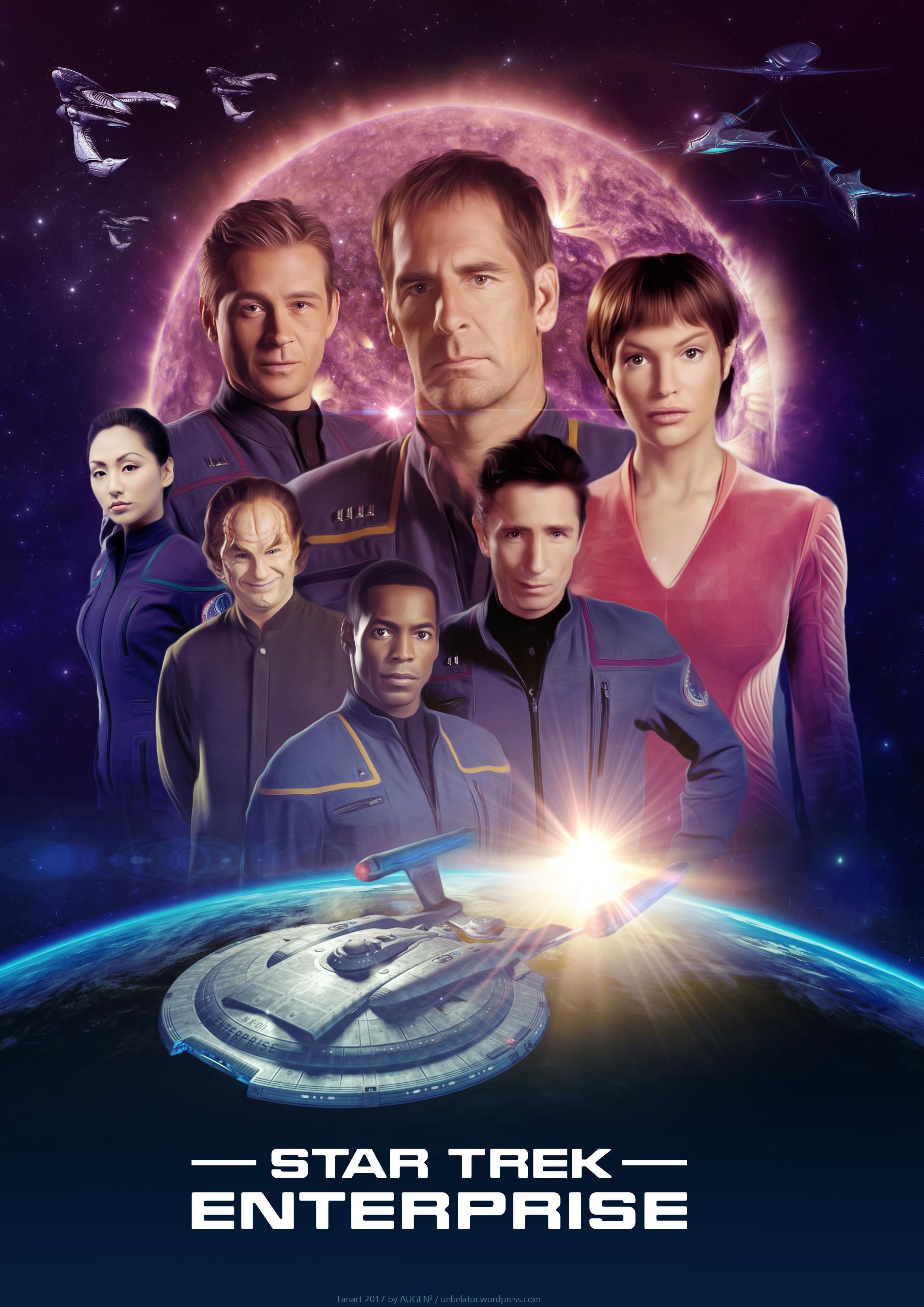
Star Trek: Enterprise
- Release Date
- September 26, 2001
- Cast
- Scott Bakula , John Billingsley , Jolene Blalock , Dominic Keating , Anthony Montgomery , Linda Park , Connor Trinneer , Solomon Burke Jr.
- Main Genre
- Sci-Fi
- Seasons
- 4
The last television series on air before Star Trek: Discovery is also the first in the timeline as Star Trek: Enterprise takes place over 100 years before the adventures of Kirk and Spock in Star Trek: The Original Series. The series follows Jonathan Archer, the captain of the Enterprise NX-01 which was Earth’s first starship able to reach warp five. Major events in the series are around first contact with alien species like the Klingon and the Xindi. The series also featured the true formation of the United Federation of Planets.
The series also established the Temporal Wars, a conflict that stretched across time and space and resulted in the creation of multiple timelines as agents from various factions in the 32nd century were sent back in time to move history in their favor. This eventually resulted in an all-out war, and while it was resolved, it later had some major ramifications for the franchise. The first was that all-time travel technology became outlawed or destroyed in the 32nd century, so when the crew of Discovery jumped forward in time, they had no way of returning home. The other was a way for the writers to fix continuity errors, like moving up the date of Khan’s rise and the Eugenics wars from the 1990s, as established in The Original Series, to the 2010s.
Star Trek: Discovery: Seasons 1 and 2 (2256-2258)
When Star Trek: Discovery first premiered, it was pitched as a prequel to Star Trek: The Original Series, taking place nine years before the events of the series. It introduced Sonequa Martin-Green as Michael Burnham, the never-before-mentioned adopted sister of Spock who ended up starting the war between the Federation and the Klingons, one that would have repercussions for the franchise for years. Star Trek: Discovery dealt with a threat from the Mirror Universe, a faction that would come into play in Star Trek: The Original Series, while season two brought on fan-favorite versions of characters from the original Star Trek pilot in the form of Captain Christopher Pike (Anson Mount), Number One (Rebecca Romijln), and Spock (Ethan Peck).
Star Trek: Discovery season two ended with the crew of the Enterprise making the decision to jump forward 1000 years in the future to save the galaxy from an artificial intelligence threat. This resulted in Pike, Spock, and Number One telling Starfleet that Discovery was destroyed in the battle and vowing never to speak of it or the crew again to prevent another incident like the rouge AI Control from happening. This was done to explain why nobody in the later series of Star Trek mentioned any of the characters on Discovery or the advanced technology the ship had as the first and only one of its kind to use an experimental spore drive.
Star Trek: Strange New Worlds (2259-TBD)
Star Trek: Strange New Worlds is both a spin-off of Star Trek: Discovery, following Captain Pike and the crew of the USS Enterprise, introduced in that series, as well as a continuation of the original pilot for Star Trek: The Original Series “The Cage.” Now that Captain Pike knows the fate that awaits him by the time Star Trek: The Original Series happens, he and the crew of the Enterprise begin exploring strange new worlds. The series is notable for featuring not only Spock but also his first-ever meeting with Captain Kirk (Paul Wesley) and the first missions of Uhurua (Celia Rose Gooding). Other members of the original crew, like Nurse Chapel (Jess Bush) and Doctor M’Benga (Babs Olusanmokun), while Season 2’s finale introduces a young Scotty (Martin Quinn).
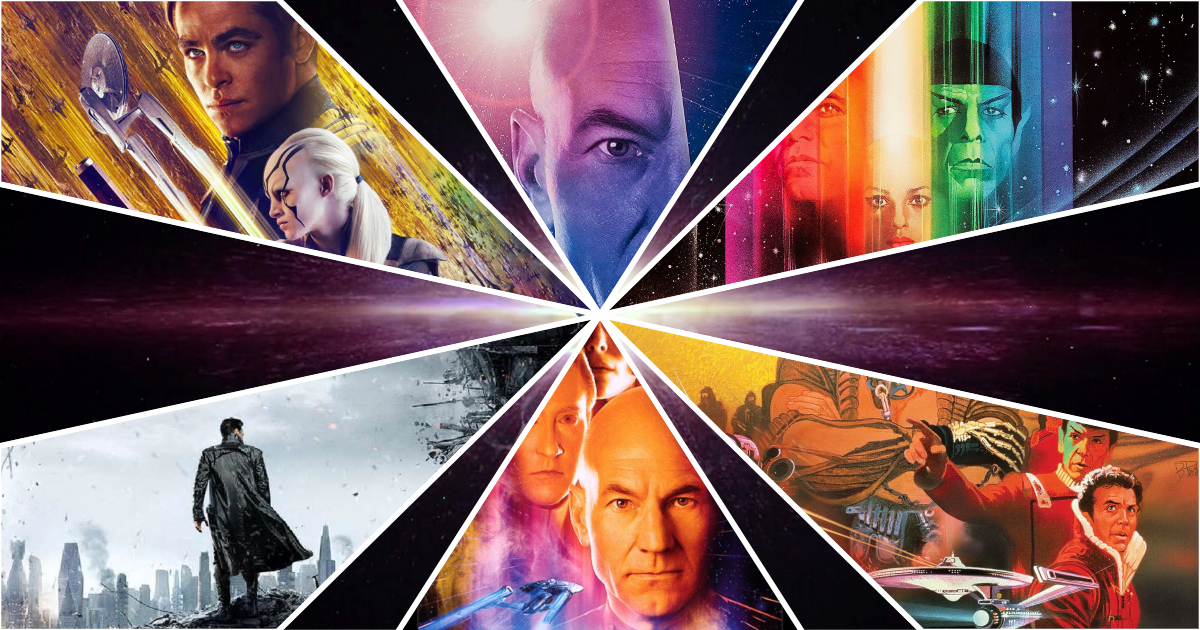


Star Trek Movies in Order: How to Watch Chronologically and by Release Date
Through 13 films with various different crews, take a look at how to watch the Star Trek movie series in either release or chronological order.
It also adds a new wrinkle to the lore: La’an Noonien-Singh (Christina Chong), who is a descendant of villain Khan Noonien Singh. The series has so far fleshed out the alien race, The Gorn, and features the foundation of the Prime Directive rule, one that forbids a Starship from interfering with the development of an alien planet. It also features time travel in two key episodes. The first was when La’an and another version of Kirk traveled to 2020 Toronto, where La’an has a chance to kill a young Khan when he was just a boy but doesn’t due to him not being guilty of any crime yet, and the other involved the crew of Star Trek: Lower Decks traveling back in time and arriving back 100 years before their time.
Star Trek: The Original Series (2265-2269)
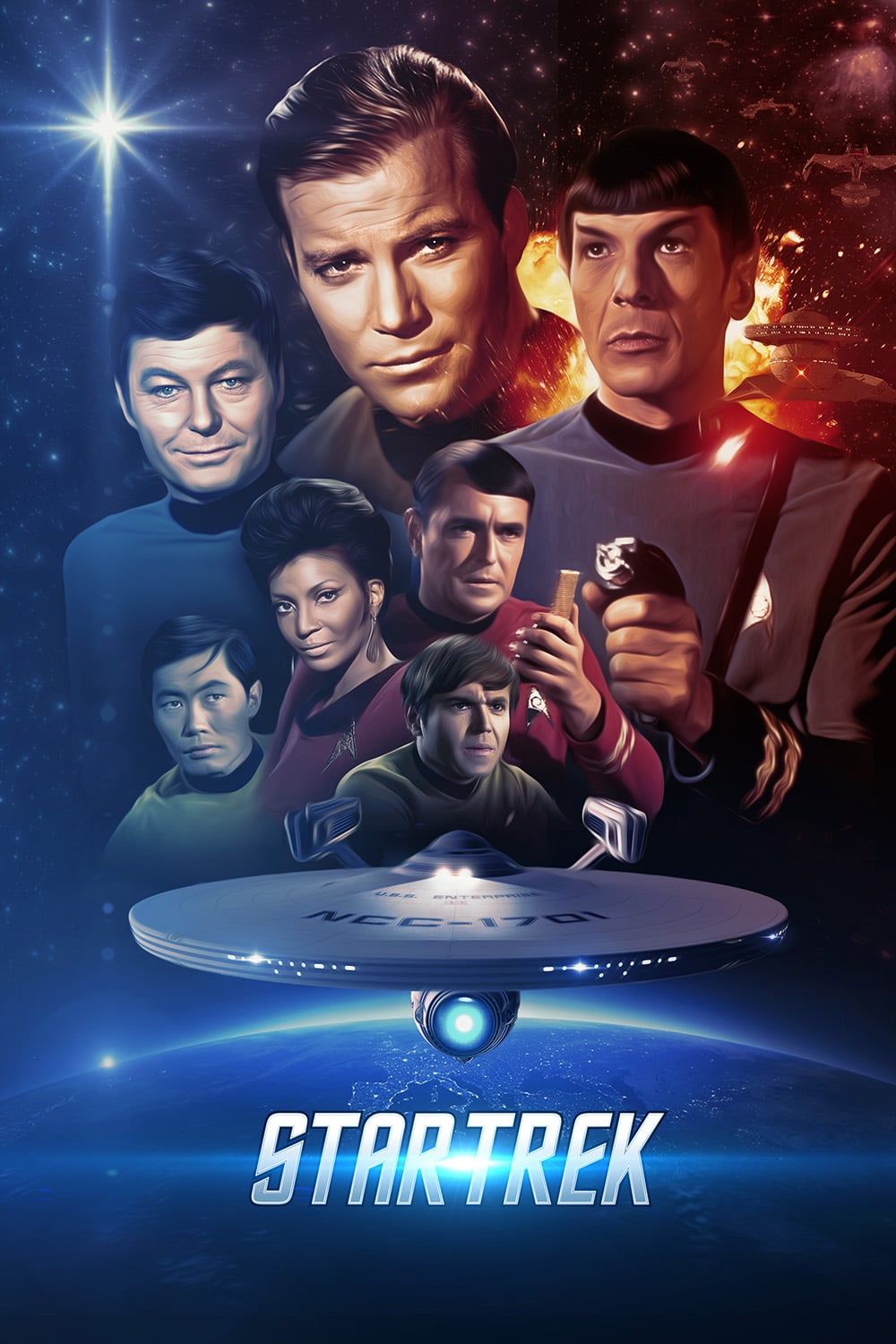


Star trek
- Release Date
- September 8, 1966
- Seasons
- 3
The one that started it all, Star Trek: The Original Series, follows the crew of the USS Enterprise in their five-year mission to explore strange new worlds and go where no one has gone before. Under the guidance of Captain Kirk (William Shatner), his first officer Spock (Leonard Nimoy), and friend and ship doctor Leonard “Bones” McCoy (DeForest Kelly), the crew of the USS Enterprise are the most important characters in the Star Trek franchise. Decisions and events here have major ripple effects on the entire franchise.
There are far too many to name, but the biggest ones include in 2267 when the crew finds and uncovers the body of Khan Nooniegn-Signh, and after he attempts a mutiny, they leave him on a planet to begin a new life, an action that will have repercussions decades later.
Star Trek: The Animated Series (2269-2270)
Star Trek: The Animated Series was made in 1973, four years after Star Trek: The Original Series was canceled. It featured the continuing adventures of the crew of the Enterprise’s five-year mission. It lasted for two seasons and helped round out the stories of Captain Kirk, Spock, and the rest of the USS Enterprise.
Star Trek: The Motion Picture (2271)
While no official stardate is mentioned in Star Trek: The Motion Picture and is only identified as the 2270s, supplementary material for the film dates it one year after the crew of the Enterprise’s five-year mission. The film sees the crew of the Enterprise reunite to investigate a mysterious and powerful alien cloud known as V’Ger, which is destroying everything in its path as it approaches Earth. While not stated in the film, subsequent Star Trek material has suggested that V’Ger is the progenitor of the Borg, one of the franchise’s most popular recurring enemies.
Star Trek II: The Wrath of Khan (2285)
The most iconic Star Trek film, The Wrath of Khan, picks up 15 years after the events of the Star Trek: The Original Series episode “Space Seed.” The time since the planet Khan was marooned on, it became a wasteland after one of the planets near it was destroyed and altered the atmosphere. Khan now seeks revenge on Kirk and does so by going after the planet-terraforming machine called the Genesis device, a machine created by Kirk’s ex, Carol Marcus, and his son, David Marcus. Kirk is able to defeat Khan but at a price, as Mr. Spock is forced to give his life to save the crew of the Enterprise. Spock’s death will have major repercussions on the franchise that will be felt for years.
Star Trek III: The Search for Spock (2285)
Star Trek III: The Search for Spock picks up just months after The Wrath of Khan, as the crew of the Enterprise discovers that there is a way to revive Spock. They go against Starfleet’s orders and steal the Enterprise to return Spock’s body and mind to Vulcan so that he can be reborn. The crew must also face off with hostile Klingons, led by Kruge (Christopher Lloyd), who is bent on stealing the secrets of the powerful terraforming Genesis.
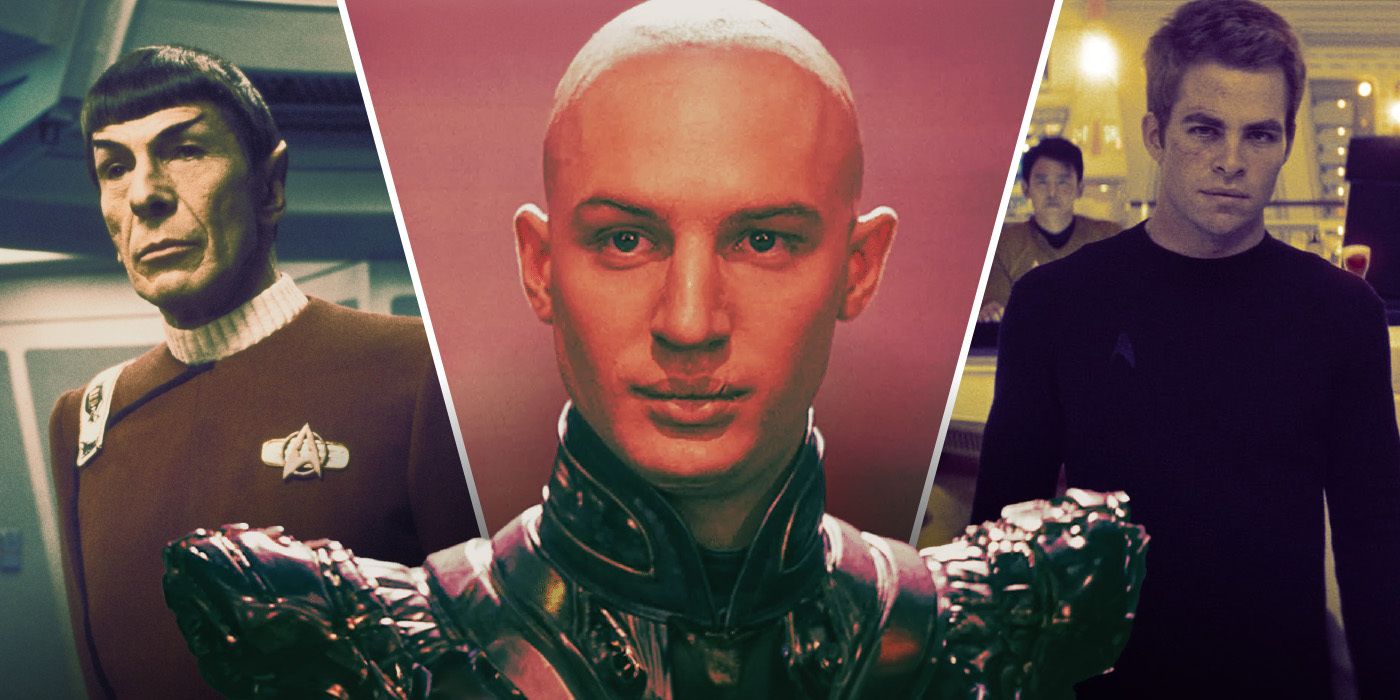


Here’s How Much Each Star Trek Movie Made at the Box Office Upon Release
Star Trek is one of the most lucrative franchises of all time. Let’s look at each film’s box office numbers.
The film features some major hallmarks of the franchise. The first is the destruction of the Enterprise, a ship that had been with the franchise for years and would be absent in the following film. The second was establishing the core characters as fugitives from the United Federation of Planets, which would set up clearing their names in the follow-up. It also featured Spock being resurrected but at another cost for Kirk, the death of his son, which would begin to drive Kirk’s prejudice against Klingons for many films.
Star Trek IV: The Voyage Home (2286 and 1986)
Star Trek IV: The Voyage Home sees the former crew of the USS Enterprise discover that Earth is in grave danger from an alien probe attempting to contact now-extinct humpback whales. The crew travels to Earth’s past to find whales who can answer the probe’s call. The first and final part of the movie takes place one year after The Search for Spock, but the majority of the movie takes place in 1986, the present day for moviegoing audiences. While Star Trek had done time travel stories before, this one set a template for future entries in the franchise. By the end of the film, Kirk and his crew had been reinstated and cleared of all charges.
Star Trek V: The Final Frontier (2287)
Star Trek V: The Final Frontier deals with the crew of the new USS Enterprise-A as they confront renegade Vulcan Sybok, who is searching for God at the center of the galaxy. Sybok is Spock’s half-brother, and he is from his father’s previous relationship with a Vulcan woman. This makes the second chronological secret member of Spock’s family and the first introduced in the series in order of release.
Sybok’s presence was actually hinted at in the series Star Trek: Strange New Worlds when his lover, Angel, attacks his half-brother’s ship. The entry is also the first to allude to a higher power in the Star Trek franchise, and while God would not be revealed in the series, the idea of someone being the creator of life in the galaxy would be picked up years later in Star Trek: The Next Generation and is now the main storyline for the final season of Star Trek: Discovery.
Star Trek VI: The Undiscovered Country (2293)
The final time the entire crew of the USS Enterprise would be together was in Star Trek VI: The Undiscovered Country. The Klingons seek to form an alliance with the Federation after years of fighting due to their planet suffering a major catastrophe, but Kirk is still bitter after the death of his son at the Klingon’s hands in Star Trek III: The Search for Spock. Kirk and Bones are framed for the murder of a high-up Klingon official, which threatens the peace accords, and they, alongside the rest of the crew of the Enterprise, must work to clear their names.
This final entry for most of the original cast marks a turning point in the franchise. It marked the end of the Federation and Klingon conflict, setting up Star Trek: The Next Generation, featuring the character Worf in a prominent role as part of the crew. The film takes place 28 years after Star Trek: The Original Series, and through one live-action show, an animated series, and six films, audiences saw a massive epic unfold for these characters, but the story was far from over as a new era began for the franchise and the next generation began.
Star Trek: The Next Generation (2364-2370)
Star Trek: The Next Generation takes place a century after the events of Star Trek: The Original Series. The series follows Captain Jean Luc-Picard and the crew of the USS Enterprise-D as they continue to explore strange new worlds and seek out new life and new civilizations. For many audiences, this was their Star Trek and introduced a whole new host of concepts to the franchise, with the most iconic being the villain, The Borg.
Star Trek: The Next Generation might be one of the most important in terms of how it connects to Star Trek Discovery. The first is the episode “Unification,” in which Spock looks to bring peace between the Vulcans and Romulans. Not only is this paid off as Spock’s vision of a united Romulus and Vulcan comes true in the form of the planet Ni’Var in Star Trek: Discovery, but his work with the Romulan people will lead to the events that create the alternate Kelvin timeline of Star Trek, Star Trek Into Darkness and Star Trek Beyond.
Yet the most important element is in the episode “The Chase,” which reveals that the reason various alien life in the galaxy looks so similar is due to sharing a common ancestry from an ancient species that crafted life in their image. This revelation forms the backbone of Star Trek: Discovery‘s final season as the crew looks to find the technology of the species that created life, now dubbed the Progenitors. The episode debuted in 1993, and now, 31 years later, the series is finally going to delve into some answers.
Star Trek: Deep Space Nine (2369-2375)
Star Trek: Deep Space Nine broke from franchise conventions as instead of being focused on a starship, it was set on a space station Deep Space Nine, located adjacent to a wormhole connecting Federation territory to the Gamma Quadrant on the far side of the Milky Way galaxy. The series begins one year before the events of Star Trek: The Next Generation come to a conclusion and is firmly connected to the events of that series as Benjamin Sisko, head of Deep Space Nine, is mourning the death of his wife, who was killed by the Borg at the Battle of Wolf 359 seen in the episode “The Best of Both Worlds Part II” from The Next Generation and has a difficult time seeing the face of Jean-Luc Picard as that was the face he saw leading the Borg that lead to the death of his wife.
The biggest event of Star Trek: Deep Space Nine is The Dominion Wars, a massive story arc that ran over the course of the series. It involved all major powers of the Alpha and Gamma Quadrants, organized into two opposing military alliances, the Federation Alliance and the Breen-Dominion Alliance, which resulted in the deadliest conflicts in the galaxy. It would begin the drive for the Federation to become a more militarized organization.
Star Trek Generations (2371)
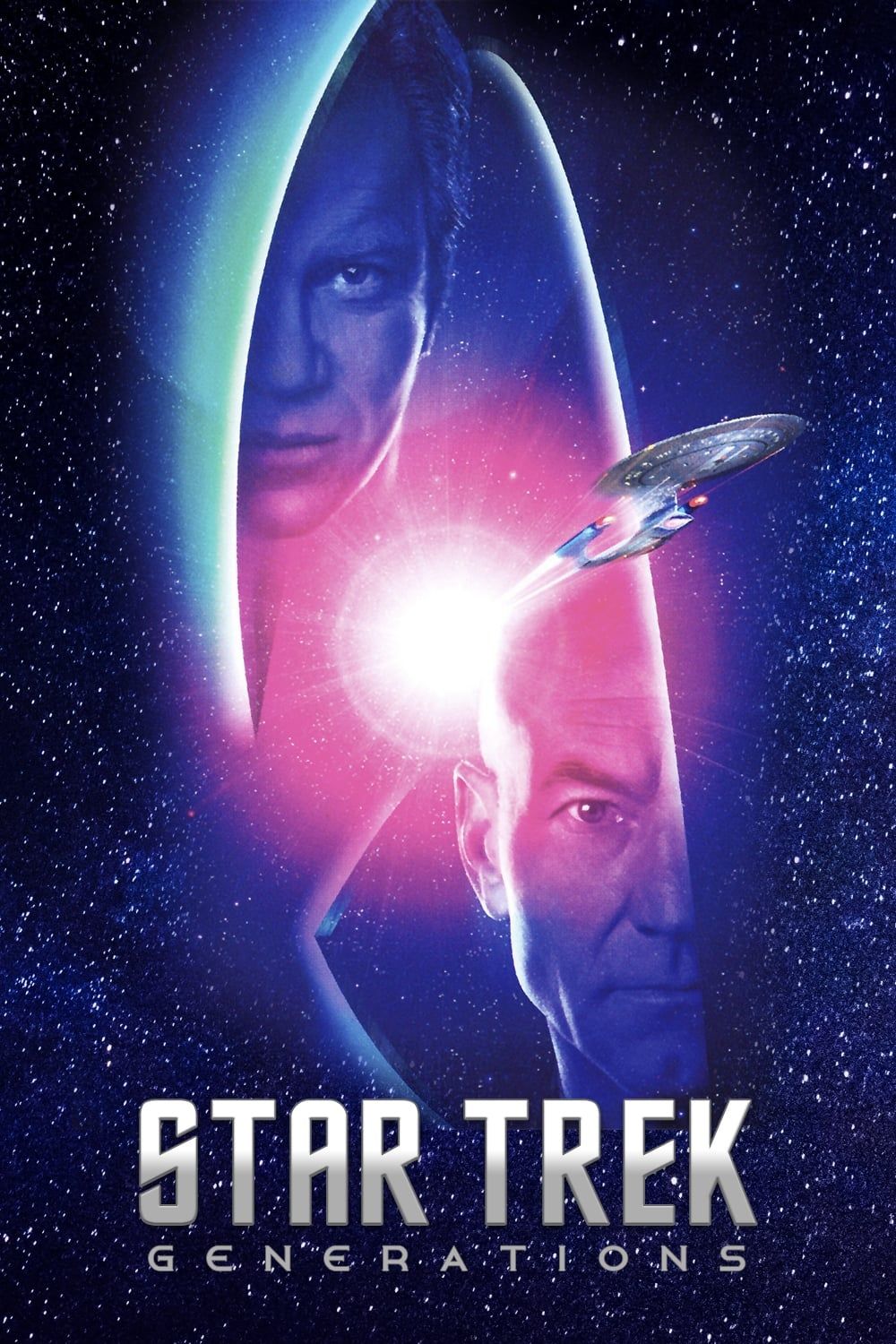


Star Trek: Generations
- Release Date
- November 18, 1994
- Director
- David Carson
- Runtime
- 118
- Tagline
- Two captains. One destiny.
Star Trek: Generations occupies an interesting place within the timeline. It is set one year after the events of The Next Generation and two years into Star Trek: Deep Space Nine in the year 2371. Yet the film’s beginning takes place shortly after the events of Star Trek VI: The Final Frontier, which sees Captain Kirk stuck in a pocket dimension, allowing him to meet Captain Jean-Luc Picard of The Next Generation nearly a century later into his future. This film marked the death of Captain Kirk, who died the way he lived, a man of adventure.
Star Trek: First Contact is another time travel movie, similar to Star Trek IV: The Voyage Home. Set six years after being assimilated by the Borg in Star Trek: The Next Generation, Captain Picard and his crew travel through a time portal to pursue the Borg to April 4, 2063. This is the date before the historic warp drive flight that leads to humanity’s first encounter with alien life, and the Borg are looking to alter the future so humans never make contact. The film’s date of April 5th has now become an unofficial Star Trek holiday known as First Contact Day.
Star Trek: Insurrection (2375)
Star Trek: Insurrection is notable as the film is set in 2375, the same year as the final season of Star Trek: Deep Space Nine. Trying to take the renegade Starfleet team element from Star Trek III: The Search for Spock, the crew of the USS Enterprise-E rebels against Starfleet after they discover a conspiracy with the Son’a species to steal the peaceful Ba’ku’s planet for its rejuvenating properties.
Star Trek: Voyager (2371-2378)
Star Trek: Voyager begins in 2371, the same year as Star Trek: Generations. It follows the adventures of the USS Voyager as it attempts to return home to the Alpha Quadrant after being stranded in the Delta Quadrant on the far side of the galaxy. This entry is key for introducing two characters to the franchise that will play major roles in future installments. The series introduced Captain Janeway (Kate Mulgrew), the first female Captain in the franchise, who will later have a major role in Star Trek: Prodigy.
The second is Seven of Nine (Jeri Ryan), a former Borg drone that was born Annika Hansen before being assimilated by the Borg at age six in 2356, eight years before the start of Star Trek: The Next Generation. Seven of Nine plays a major role in Star Trek: Picard as the series delves more into the Borg’s history and culture.
Star Trek: Nemesis (2379)
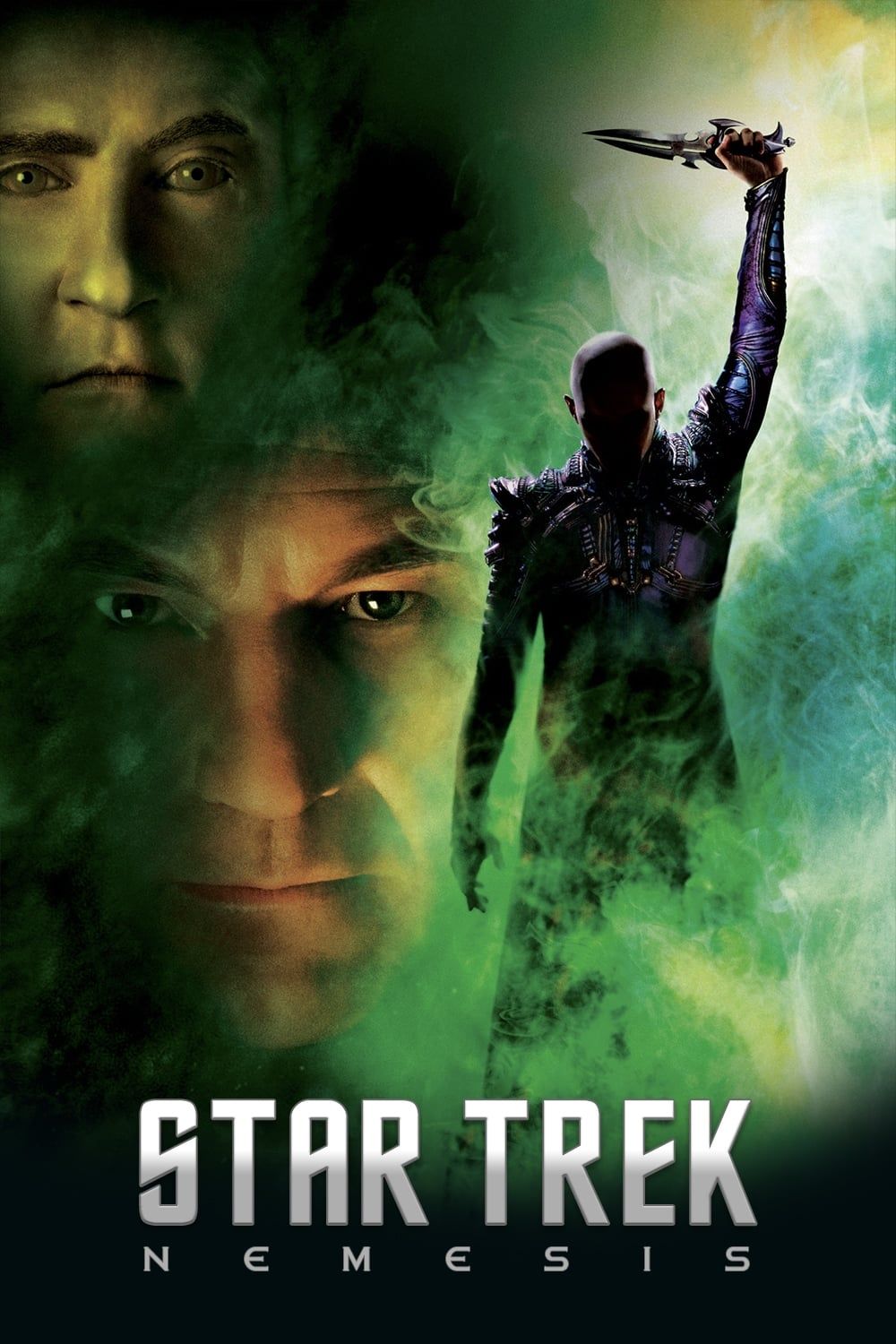


Star Trek: Nemesis
- Release Date
- December 13, 2002
- Director
- Stuart Baird
- Runtime
- 117
- Tagline
- A generation’s final journey begins
Star Trek: Nemesis takes place fifteen years after the events of Star Trek: The Next Generation and deals with a threat from a clone of Captain Picard named Shinzon (Tom Hardy), who has taken control of the planet Romulus and was created by the Romulan Empire originally to create a spy within the Federation but the plans were abandoned likely due to the events of “Unification” and the clone child was left on die as a slave on the Romulan controlled planet Remus. The film marked the final film for the crew of The Next Generation as it marked many landmarks, including the wedding of Commander Will Ryker and Deanna Tori and the death of Data, all elements that lead into Star Trek: Picard.
Star Trek: Lower Decks (2380-TBD)
Star Trek: Lower Decks is a comedic spin on the Star Trek franchise. This animated adventure follows the low-ranking support crew of the starship Cerritos and begins one year after the events of Star Trek: Nemesis. Star Trek: Lower Decks crossed over with Star Trek: Strange New World in that series’ second season episode, “Those Old Scientists,” which saw Tawny Newsome and Jack Quaid get the chance to play their roles of Beckett Mariner and Brad Boimler, respectively, in live-action.
The series just announced its fifth and final season, meaning both it and Star Trek: Discovery will come to a close in 2024, and fans are certainly hoping to hear a mention of the characters of Lower Decks in Discovery just to know these lowly crew members did become big names with the Federation history.
Star Trek: Prodigy (2383-TBD)
Star Trek: Prodigy was an attempt to create a new starting point for young kids to get into the Star Trek franchise. Set in 2383, it follows a group of young aliens from the Delta Quadrant who find the abandoned starship Protostar and learn about Starfleet with the help of the ship’s computer, an AI of Captain Janeway from Star Trek: Deep Space Nine. This young crew of kids makes their way to the Alpha Quadrant while discovering what it means to be a crew and what being part of Starfleet is all about.
The series features plenty of cameos and references to the past Star Trek series but does so in a way that invites the young viewer to learn more about them. The series was canceled at Paramount+ after one season but was then picked up by Netflix, where it will have a second season.
Kelvin Timeline (2387, 2255 – 2263)
This is where things get a bit tricky. In the year 2387, a supernova destroys the planet Romulus. For those in the original timeline, the destruction of Romulus kicks off the events of Star Trek: Picard, but a major event happens that none of the characters are aware of at the time: the creation of a new timeline.
In an attempt to stop the supernova, an elder Spock launches a piece of red matter into the supernova that creates a black hole that sucks both him and the Romulan villain Nero (Eric Bana) through it and back in time. Nero arrives first in the year 2233, which results in the destruction of the USS Kelvin and the death of Geroge Kirk on the birth of his son James T. Kirk’s birth, creating a new branching timeline that is the Kelvin timeline, which is where the events of Star Trek, Star Trek Into Darkness and Star Trek Beyond take place. This means that while the events of the Kelvin timeline take place earlier, they are doing so in a separate timeline that is built off the events of the prior stories. So 2009’s Star Trek is both a reboot, a prequel, and a sequel to the franchise.
Due to the timeline changing, the events of the Kelvin timeline actually take place earlier than in Star Trek: The Original Series. 2009’s Star Trek takes place in 2255, while Into Darkness takes place four years later in 2259, and Beyond is set in 2263, roughly four years into the crew’s five-year mission. This is notably two years before Star Trek: The Original Series begins. By the 31st century of Star Trek: Discovery season three, the Prime Timeline is aware of the Kelvin timeline. They established a Starfleet officer named Yor, a time soldier who originated from another timeline and referenced the events of 2009’s Star Trek.
Star Trek: Picard (2399-2402)
Star Trek: Picard takes place 20 years after the events of Star Trek: Nemesis in the year 2399. In the years since the series concluded, the Federation has become more isolationist. Following the destruction of Romulus, the Romulan people have become scattered; meanwhile, an attack on a Starfleet operation has led to a ban on synthetics. Season one focuses on Picard discovering more about the syncs with the discovery of Data’s daughter Soji while also exploring more into the Borg culture as Romulans have begun mining Borg technology.
Season 2 takes place two years later, in 2401, and sees an old adversary named Q, an extra-dimensional being, traping Picard and his new crew in an alternate reality which forces them to travel back in time to Los Angeles 2024 to save the future while exploring more about Picard’s own family origin. Finally, season three takes place one year later, in 2402, as Picard reunites with his old crew from The Next Generation, as well as his long-lost son, for a final showdown with the Borg.
Star Trek: Discovery: Seasons 3-5 (3188-TBD)
Now, finally, it’s time to loop back to Star Trek: Discovery. Season 3 sees the crew of Discovery travel to the year 3188 to discover the Federation fragmented and investigates the cause of a cataclysmic event known as the “Burn” as they attempt to rebuild Starfleet. Burnham is promoted to captain at the end of the season, and in season four, the crew helps rebuild the Federation while facing a space anomaly created by unknown aliens that causes destruction across the galaxy, similar to the plot of Star Trek: The Motion Picture.
The fifth and final season sees Discovery faced with its biggest task yet. They embark on a journey to uncover the mystery of The Progenitors, the species that The Next Generation revealed created multiple sentient lifeforms in the universe. The final season of Star Trek: Discovery, the series set furthest in the Star Trek timeline, is now taking the franchise to answer the oldest question in the cosmos: where do we come from, and what is our purpose?
With humans making first contact with aliens on April 5, 2063, to the events of Star Trek: Discovery in 3188, the story of Star Trek is one that spans 1,125 years. It is an epic tale filled with heroes, villains, and worlds filled with imagination and hope. Star Trek continues forward as there are plenty more stories to tell.





